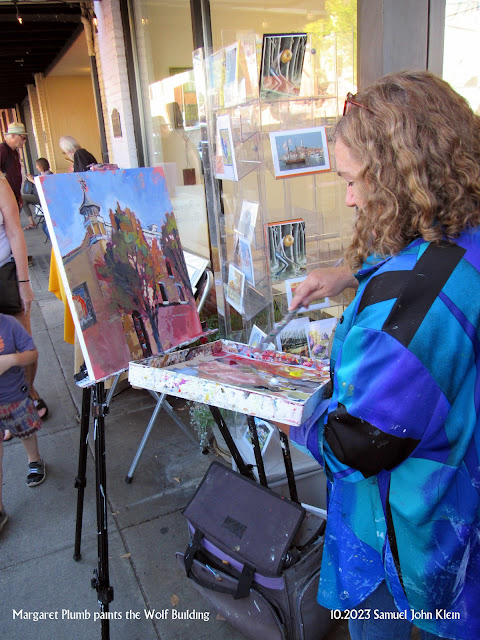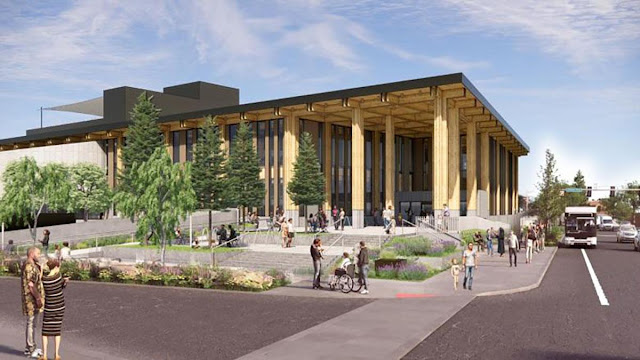4161While the process grinds forward on the redux of Interstate Bridge 2.0, the process is rolling along quite smoothly on the planning to replace the Burnside Bridge.
The current bridge is gorgeous, laden with history, a classic of design, a linchpin of Portland's geography, and will collapse like a Republican excuse for not doing the right thing when Cascadia Next happens. It's apparently advantageously situate for keeping the city together in the wake of that anticipated cataclysm, so the goal is to have a Burnside Bridge that will not shake down when that 'quake finally happens.
In the apres-quake times, the most important thing for getting Portland back on its bearings ... however long that will take ... will be eastside-westside connectivity and access.
The opporunity is being taken to make the new-Burnside-Bridge-to-be another example of statement architecture that we Portlanders are so very fond of. There are two options to consider; a tied-arch bridge, similar to the Fremont Bridge, and an cable-stayed bridge, using the technique that was built into the Tilikum Crossing.
These two styles are asymmetrical; the signature architectural part, the arch in the first case and the cable-stay tower support in the second, will be over the Interstate 5-east end of the bridge, leaving a span over the middle of the channel for a the necessary drawspan for river traffic and for making Portland tourist wonder why they had to stop on the bridge in the middle of the day.
There are also variations on each style. This picture, sharked from the Earthquake Ready Burnside site, shows the beauty profile of the tied arch look from a point in Tom McCall Waterfront Park on the west bank:
 |
| Source: https://burnsidebridge.participate.online/tied-arch.html |
Driving over it will look like this ... which reminds me of a crossing of the Fremont, which has always been a love of ours:
 |
| Source: https://burnsidebridge.participate.online/tied-arch.html |
The other option, the cable-stayed version, looks this way:
 |
| Source: https://burnsidebridge.participate.online/cable-stay.html |
This version will have taller towers than the arch-style, but the visual presence isn't there for me. However, the asymmetry of the cable stays does have a element of dynamic style in it.
There is a survey on line that anyone can submit their opinions and personal preferences into, it's found at https://burnsidebridge.participate.online/survey.html. The homepage of the informational website is https://burnsidebridge.participate.online/, of course.
In the near future, this bridge will close for a remarkably-long five year span for this replacement. I don't even remember the Hawthorne Bridge being closed for that long back in the 90s when they updated the eastside approaches.This will be something to contend with for a lot of us on all levels. I'll be recording everything I can about it and posting it here as I go.
We were there for the opening of the 21st Century Sellwood Bridge, and I'll put my anchor down here; I'm looking forward for us to be there for the opening of the 21st Century Burnside Bridge as well. In the meantime I'm going to be finding us taking many more pictures of the current span; it's a charming architectural gem, and that passing will be notable.















































